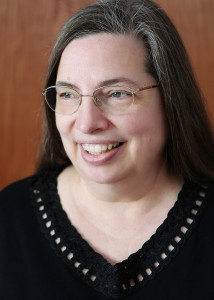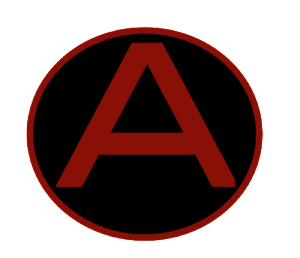I have autism. I am autistic. Both these statements describe me and both are true. However, these two statements are NOT equal.
Having autism means I have been diagnosed, based on deficit criteria used by the medical field, with a medically defined disorder called autism. The diagnosis of autism is housed in the DSM 5 so falls under the domain of psychiatric disorders. When autism was first described, based on behavior deficits, it was thought to be a psychiatric disorder. We now know differently, but the diagnosis of autism remains housed in the DSM 5.
Being autistic means something vastly different. Everyone’s personhood comes to be defined by his way of thinking, being and interacting in this world. I have an autistic style of thinking, being and interacting in the world. Thus, my very personhood is autistic. Just like my personhood is white and female, so is it autistic.
I am autistic and I have autism. Both apply. Both are true. I do not need to choose only one statement as my truth. People need to understand this. It is not a case of choose your side and fight for your cause. This is important. Problems happen because people do not understand the difference these two statements imply.
I have autism. Autism is a disability. Life with autism can be difficult. Because of autism I need certain supports and accommodations. Having autism means I can ask for these supports and accommodations due to the fact that I have a medically defined entity called autism. I appreciate my diagnosis. I appreciate having autism because this medical label allows me a way to talk about and to get the accommodations and supports I need to live my life.
But the medical label of autism does not define my personhood. Problems arise when the diagnostic deficit language of having autism is taken out of the medical realm and used to describe my humanity – the human being I am in this world – a white autistic female. This is who I am.
I have autism. The difficulties that come with my autism can be supported and accommodated.
I am autistic. It is my place of being in this world. The essence of who I am – all my thoughts, actions and interactions are based on who I am as an autistic white woman.
I wish more people understood the differences between having autism and being autistic. At this point in history it is assumed having autism and being autistic are one and the same thing. This sort of understanding by the general public and most professionals who deal with autistic people cause us to be treated as if we are only the sum total of our autism deficits rather than as autistic human beings.
Here are a few illustrations:
Painting Classes
If you are autistic and want to learn to paint and can sign yourself up for a painting class this is what you do. However, if your autism posses difficulties meaning you need to ask your broker to sign you up for painting classes you will likely wind up being offered Art Therapy.
Piano Lessons
If you are autistic and want to learn to play the piano and ask for assistance to find a piano teacher you are offered Music Therapy. If you are neurotypical and want to learn to play the piano nobody will suggest Music Therapy, but instead when you ask about piano lessons you will get referral information about piano teachers.
Making Friends
If you are autistic and want to meet people who have similar interests a Social Skills Group is suggested. If you are neurotypical nobody will think in a million years to give you information about social skills groups, but instead will tell you about things like the Saturday Bird Watch Hikers, the Quilting Class at JoAnn Fabrics and the Open Studio at the Pottery Shop – established groups or classes where participants share one of your interests.
At this point in history, because society views having autism and being autistic as the same thing, autistic people are assumed in need of fixing – as if having autism is the sum total of our existence. The opportunities people extend to us are based on this notion. No matter how old we get we are continually segregated into things like Art Therapy, Music Therapy and Social Skills Groups.
Some days it is down right impossible to get others to see I am more than my autism diagnosis. In reality I am an autistic person wanting to enjoy life and learn new things just like any other person. Sometimes I need support or a particular accommodation to make this a reality – not therapy.
BOOKS BY JUDY ENDOW
Endow, J. (2019). Autistically Thriving: Reading Comprehension, Conversational Engagement, and Living a Self-Determined Life Based on Autistic Neurology. Lancaster, PA: Judy Endow.
Endow, J. (2012). Learning the Hidden Curriculum: The Odyssey of One Autistic Adult. Shawnee Mission, KS: AAPC Publishing.
Endow, J. (2006). Making Lemonade: Hints for Autism’s Helpers. Cambridge, WI: CBR Press.
Endow, J. (2013). Painted Words: Aspects of Autism Translated. Cambridge, WI: CBR Press.
Endow, J. (2009). Paper Words: Discovering and Living With My Autism. Shawnee Mission, KS: AAPC Publishing.
Endow, J. (2009). Outsmarting Explosive Behavior: A Visual System of Support and Intervention for Individuals With Autism Spectrum Disorders. Shawnee Mission, KS: AAPC Publishing.
Endow, J. (2010). Practical Solutions for Stabilizing Students With Classic Autism to Be Ready to Learn: Getting to Go. Shawnee Mission, KS: AAPC Publishing.
Myles, B. S., Endow, J., & Mayfield, M. (2013). The Hidden Curriculum of Getting and Keeping a Job: Navigating the Social Landscape of Employment. Shawnee Mission, KS: AAPC Publishing.

